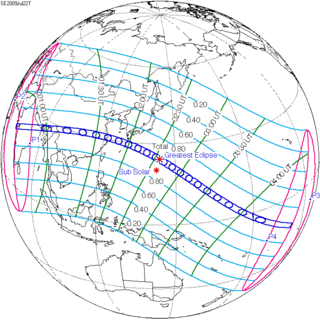Solar eclipse of July 22, 2009
| Solar eclipse of July 22, 2009 | |
|---|---|
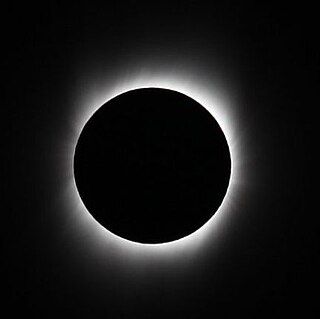 Totality from Kurigram District, Bangladesh | |
| Type of eclipse | |
| Nature | Total |
| Gamma | 0.0698 |
| Magnitude | 1.0799 |
| Maximum eclipse | |
| Duration | 399 s (6 min 39 s) |
| Coordinates | 24°12′N 144°06′E / 24.2°N 144.1°E |
| Max. width of band | 258 km (160 mi) |
| Times (UTC) | |
| (P1) Partial begin | 23:58:18 |
| (U1) Total begin | 0:51:16 |
| Greatest eclipse | 2:36:25 |
| (U4) Total end | 4:19:26 |
| (P4) Partial end | 5:12:25 |
| References | |
| Saros | 136 (37 of 71) |
| Catalog # (SE5000) | 9528 |
A total solar eclipse occurred on July 22, 2009. It was the longest total solar eclipse during the 21st century, not to be surpassed until 13 June 2132.[1] It lasted a maximum of 6 minutes and 39 seconds off the coast of Southeast Asia,[2] causing tourist interest in eastern China, Japan, India, Nepal and Bangladesh.[2][3][4]
Visibility
A partial eclipse was seen within the broad path of the Moon's penumbra, including most of Southeast Asia (all of India and China) and north-eastern Oceania.
The total eclipse was visible from a narrow corridor through northern Maldives, northern Pakistan, northern India, eastern Nepal, northern Bangladesh, Bhutan, northern Philippines, the northern tip of Myanmar, central China and the Pacific Ocean, including northern part of the Ryukyu Islands, Marshall Islands, and Kiribati.
Totality was visible in many large cities, including Surat, Vadodara, Bhopal, Varanasi, Patna, Gaya, Dinajpur, Siliguri, Guwahati, Tawang in India and Chengdu, Nanchong, Chongqing, Yichang, Jingzhou, Wuhan, Huanggang, Hefei, Hangzhou, Wuxi, Huzhou, Suzhou, Jiaxing, Ningbo, Shanghai, Chapai Nawabganj as well as over the Three Gorges Dam in China. However, in Shanghai, the largest city in the eclipse's path, the view was obscured by heavy clouds.[5][6] According to NASA, the Japanese island Kitaio Jima was predicted to have the best viewing conditions[7][8] featuring both longer viewing time (being the closest point of land to the point of greatest eclipse) and lower cloud cover statistics than all of continental Asia. The Indian city of Varanasi had similar conditions to those in Kitaio Jima; although the eclipse was the longest there than anywhere else.[9]
The eclipse, and the reaction of thousands of observers at Varanasi was captured by the Science Channel Wonders of the Universe series hosted by Brian Cox.[10]
Observations

Thousands of pilgrims gathered on the banks of the Ganges River in Varanasi, India to experience the eclipse as a religious or spiritual event. Some people expected that there would be a relationship, either positive or negative, between their health and the occurrence of the eclipse.[11]

Indian scientists observed the solar eclipse from an Indian Air Force plane.[12]
The Chinese government used the opportunity to provide scientific education and to dispel any superstition. Observers in Japan were excited by the prospect of experiencing the first eclipse in 46 years, but found the experience dampened by cloudy skies obscuring the view.
Thousands of people of Bangladesh witnessed the longest total solar eclipses of the 21st century on Wednesday, 22 July 2009 defying rain and a heavily overcast sky. Before this a "total solar eclipse observation committee" was formed with Bishwa Sahitya Kendra, Liberation War Museum, Chhayanaut's educational initiative Nalanda, Samannito Shikkha-Sangskriti, Bangladesh Nature Study and Conservation Union, and Cosmic Culture to observe the eclipse. Science initiative Discussion Project coordinated the committee, which set up the main observation camp at Madhupara village and another at the South Plaza of Jatiya Sangsad Bhaban in Dhaka. With the help of BRB Cable Industries Ltd, the committee also set up observation camps at Bell's Park in Barisal, Akimuddin Gronthagar in Chapai Nawabganj, science and technology university campuses in Syedpur and Gazipur, Jahangirnagar University and Araj Ali Matubbar library at Dania in Dhaka.[13][14][15] Akimudin Gronthagar arranged three camps to observe century's one and only solar eclipse of July 22, 2009. 99.56% totality was observed from main camp at Kamat Maath, Binodpur, Chapai Nawabganj. Totality started at 07:57:41BDT and end 3 minutes 44 seconds later. The other two camps were set up at Poddar Paar in Rajshahi and at railway's Dhar in Uttar, Dhaka. A good report with pictures on TSE 2009 can be found at [1] under the TSE 2009 section.
Duration

This solar eclipse was the longest total solar eclipse to occur in the 21st century, and will not be surpassed in duration until 13 June 2132. Totality lasted for up to 6 minutes and 39 seconds, with the maximum eclipse occurring in the ocean at 02:35:21 UTC about 100 km south of the Bonin Islands, southeast of Japan. The uninhabited North Iwo Jima island was the landmass with totality time closest to maximum, while the closest inhabited point was Akusekijima, where the eclipse lasted 6 minutes and 26 seconds.[16]
The cruise ship Costa Classica was chartered specifically to view this eclipse and by viewing the eclipse at the point of maximum duration and cruising along the centerline during the event, duration was extended to 6 minutes, 42 seconds.
The eclipse was part of Saros series 136, as was the solar eclipse of July 11, 1991, which was slightly longer, lasting up to 6 minutes 53 seconds (previous eclipses of the same saros series on June 30, 1973 and June 20, 1955, were longer, lasting 7 min 04 and 7 min 08, respectively). The next event from this series will be on August 2, 2027.[17] The exceptional duration was a result of the Moon being near perigee, with the apparent diameter of the Moon 8% larger than the Sun (magnitude 1.080) and the Earth being near aphelion[18] where the Sun appeared slightly smaller.
In contrast the annular solar eclipse of January 26, 2009 occurred near lunar apogee and 7% smaller apparent diameter to the sun. And the next solar eclipse of January 15, 2010 was also annular, with the Moon 8.1% smaller than the Sun.
Photos
 Partial eclipse |
View from space

The Terrain Mapping Camera in the Chandrayaan-1 lunar mission was used to image the earth during the eclipse.[19]
It was also observed by the Japanese geostationary satellite MTSAT:[20]
| File:July 22, 2009 Total Eclipse 8,30 a.m. Taiwan.jpg 12:30 UT (pre-eclipse) |
File:July 22, 2009 Total Eclipse 9,30 a.m. Taiwan.jpg 1:30 UT |
 Close up at 1:30 UT |
Related eclipses
This total eclipse the second in the series of three eclipses in a one-month period, with two minor penumbral lunar eclipses, first on July 7 and last on August 6.
Solar eclipses 2008–2011
This eclipse is a member of a semester series. An eclipse in a semester series of solar eclipses repeats approximately every 177 days and 4 hours (a semester) at alternating nodes of the Moon's orbit.[21]
| Ascending node | Descending node | |||||
|---|---|---|---|---|---|---|
| Saros | Map | Gamma | Saros | Map | Gamma | |
121 Partial from Christchurch, NZ |
2008 February 07 Annular |
−0.95701 | 126 Novosibirsk, Russia |
2008 August 01 Total |
0.83070 | |
131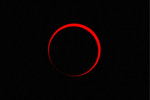 Palangka Raya, Indonesia |
2009 January 26 Annular |
−0.28197 | 136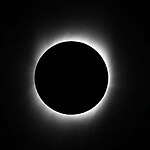 Kurigram, Bangladesh |
2009 July 22 Total |
0.06977 | |
141 Bangui, Central African Republic |
2010 January 15 Annular |
0.40016 | 146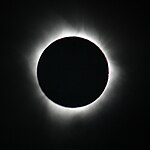 Hao, French Polynesia |
2010 July 11 Total |
−0.67877 | |
151 Partial from Vienna, Austria |
2011 January 04 Partial (north) |
1.06265 | 156 | 2011 July 01 Partial (south) |
−1.49171 | |
Partial solar eclipses on June 1, 2011, and November 25, 2011, occur on the next lunar year eclipse set.
Saros series
Solar Saros 136, repeating every 18 years, 11 days, contains 71 events. The series started with partial solar eclipse on June 14, 1360, and reached a first annular eclipse on September 8, 1504. It was a hybrid event from November 22, 1612, through January 17, 1703, and total eclipses from January 27, 1721, through May 13, 2496. The series ends at member 71 as a partial eclipse on July 30, 2622, with the entire series lasting 1262 years. The longest eclipse occurred on June 20, 1955, with a maximum duration of totality at 7 minutes, 7.74 seconds. All eclipses in this series occurs at the Moon's descending node.[22]
| Series members 29–43 occur between 1865 and 2117 | ||
|---|---|---|
| 29 | 30 | 31 |
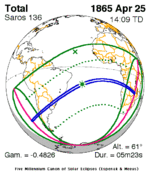 Apr 25, 1865 |
 May 6, 1883 |
 May 18, 1901 |
| 32 | 33 | 34 |
 May 29, 1919 |
 Jun 8, 1937 |
 Jun 20, 1955 |
| 35 | 36 | 37 |
 Jun 30, 1973 |
 Jul 11, 1991 |
 Jul 22, 2009 |
| 38 | 39 | 40 |
 Aug 2, 2027 |
 Aug 12, 2045 |
 Aug 24, 2063 |
| 41 | 42 | 43 |
 Sep 3, 2081 |
 Sep 14, 2099 |
 Sep 26, 2117 |
Metonic cycle
The metonic series repeats eclipses every 19 years (6939.69 days), lasting about 5 cycles. Eclipses occur in nearly the same calendar date. In addition, the octon subseries repeats 1/5 of that or every 3.8 years (1387.94 days). All eclipses in this table occur at the Moon's descending node.
| 21 events between July 22, 1971 and July 22, 2047 | ||||
|---|---|---|---|---|
| July 21–22 | May 9–11 | February 26–27 | December 14–15 | October 2–3 |
| 116 | 118 | 120 | 122 | 124 |
 July 22, 1971 |
 May 11, 1975 |
 February 26, 1979 |
 December 15, 1982 |
 October 3, 1986 |
| 126 | 128 | 130 | 132 | 134 |
 July 22, 1990 |
 May 10, 1994 |
 February 26, 1998 |
 December 14, 2001 |
 October 3, 2005 |
| 136 | 138 | 140 | 142 | 144 |
 July 22, 2009 |
 May 10, 2013 |
 February 26, 2017 |
 December 14, 2020 |
 October 2, 2024 |
| 146 | 148 | 150 | 152 | 154 |
 July 22, 2028 |
 May 9, 2032 |
 February 27, 2036 |
 December 15, 2039 |
 October 3, 2043 |
| 156 | ||||
 July 22, 2047 | ||||
Notes
- ^ NASA: Total Solar Eclipses with Durations Exceeding 06m 00s (2001 to 3000 )
- ^ a b (AFP) – 6 days ago. "AFP: Solar eclipse sparks tourism fever in China". Google.com. Retrieved 2009-07-22.
{{cite web}}: CS1 maint: numeric names: authors list (link) - ^ "Scientists: China the best place to observe longest solar eclipse in 2,000 years_English_Xinhua". News.xinhuanet.com. 2009-05-19. Retrieved 2009-07-22.
- ^ "Indian students on solar eclipse 'odyssey' to China – Yahoo! India News". In.news.yahoo.com. Retrieved 2009-07-22. [dead link]
- ^ 99.56% totality was observed in Kamat Maath, Binodpur, Chapai Nawabgan, the western part of Bangladesh.
In Sichuan province, China, 150 km southwest of Chengdu many people ascended Mount Emei to view the eclipse. While viewing conditions were not ideal due to thick cloud cover, typical of this region and altitude, the effects were reported as impressive. The summit of Mt. Emei contains numerous Buddhist temples and statues, as well as a large candle and incense lighting ceremony/area. During the eclipse day turned to night, leaving only the candles to cast a unique lighting on the adjacent Buddhist statues and buildings.
"NASA – Total Solar Eclipse of 2009 July 22". NASA.gov. Retrieved 2009-07-22. - ^ Weather conditions for cities in China during the July 22 eclipse Template:Zh icon
- ^ "NASA Map" (PDF).
- ^ Espenak, Fred. "Total Solar Eclipse of July 2009" (PDF).
- ^ http://www.indiamike.com/india/varanasi-f63/best-place-to-view-july-22-solar-eclipse-t84134/
- ^ http://www.youtube.com/watch?v=eOvWioz4PoQ
- ^ "Indians enthralled by solar eclipse". Chinadaily.com.cn. 2009-07-23. Retrieved 2009-07-23.
- ^ "Khabrein.info". Khabrein.info. Retrieved 2009-07-22.
- ^ "Thousands watch long solar eclipse". Retrieved 2009-07-23.
- ^ "People watch century's last solar eclipse". Retrieved 2009-07-23.
- ^ "People watch century's last solar eclipse". Retrieved 2009-07-23.
- ^ "Island « Total Eclipse.Jp". Totaleclipse.jp. Retrieved 2009-07-22.
- ^ "August 2, 2027 Total Solar Eclipse". Tierrayestrellas.com. Retrieved 2009-07-22.
- ^ "APOD: 2009 July 3 – Perihelion and Aphelion". Apod.nasa.gov. Retrieved 2009-07-22.
- ^ "Chandrayaan-1". ISRO. Retrieved 2009-07-31. [dead link]
- ^ NASAN.org
- ^ van Gent, R.H. "Solar- and Lunar-Eclipse Predictions from Antiquity to the Present". A Catalogue of Eclipse Cycles. Utrecht University. Retrieved 6 October 2018.
- ^ SEsaros136 at NASA.gov
References
- NASA homepage for July 22, 2009 total solar eclipse
- Interactive map of the eclipse from NASA
- Jay Anderson, Weather and Maps for the Total Solar Eclipse 2009 July 22 00:54 – 04:12 UT
Pre-eclipse news:
- Solar eclipse of July 22, 2009: Time & Place in Indian cities
- The Longest eclipse of the 21st century time – July 22, 2009
- The 21st century’s longest total solar eclipse to be Internet broadcast worldwide
- How To Watch July 22, 2009 Total Solar Eclipse Live On Web
- City of Brass at Beliefnet.com: The longest solar eclipse of the 21st century
- Solar Eclipse Could Create Chaos AP
- Watch Solar eclipse live from Guwahati
- July eclipse is best chance to look for gravity anomaly New Scientist
- Solar eclipse: All roads lead to Bihar
Photos:
- Spaceweather.com gallery
- Total Solar Eclipse, July 22, 2009, from China by Jay Pasachoff
- Enewetak, Marshall Islands. Prof. Druckmüller's eclipse photography site
- MTSAT-1R visible satellite imagery of the solar eclipse shadow (CIMSS Satellite Blog)
- The 2009 Eclipse in China
- [2] APOD, July 24, 2009, Eclipse over Chongqing, China
- [3] APOD 8/8/2009, Diamonds in a Cloudy Sky, totality in clouds from Wuhan, China
External links
- Bauer, Amanda (2009). "Solar Eclipse". Sixty Symbols. Brady Haran for the University of Nottingham.
- Total Solar Eclipse 2009 (TSE 2009) @ banglardamal.org for raw pictures from right from the focus of TSE2009 at Bangladesh.

